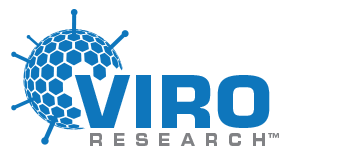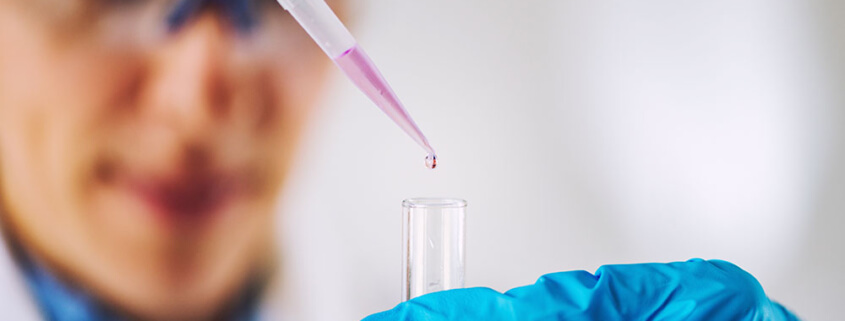By David Kilpatrick, PhD and Abbas Vafai, PhD
INTRODUCTION: Various assays have been developed over the last thirty years for detecting Herpes virus antibodies in patient sera. The three most commonly used assays are Western blot assay (WBA), enzyme-linked immunosorbent assay (ELISA), and enzyme immnodot assays (EIA). Of these, the Western blot assay (WBA) is still considered the “gold standard” in the detection of antibodies to viral proteins. The sensitivity of this assay is primarily due to the detection of antibodies to more than one viral protein in the single assay. While the WBA was more sensitive in detecting HSV antibodies early in the primary course (within 40 days of infection) of HSV-1 infections, the EIA assay had similar sensitivities to the WBA assay for HSV-2 antibody detection within 40 days of infection (2). However, the WBA is expensive and technically challenging which limits its available in clinical settings. Improvements in the EIA assay have increased its
sensitivity to a level near that of the Western blot.
DISCUSSION: Ngo et al., 20081Ngo, Thoai, D., Oliver Laeyendecker, Rhoda Ashley Morrow, Shenghan Lai, and Thomas C. Quinn. 2008. Comparison of Three Commercial Immunoassays for Detection of Herpes Simplex Virus Type 2 Antibodies in Commercial Sex Workers in Yunnan Province, China. Clinical and Vaccine Immunology, 15(8):1301-1303., Compared to three commonly used commercial immunoassays (Focus, Kalon, BioKit) for detecting HSV-2 antibodies in China, Focus (Herpes Select) kits are available for HSV-1 and -2. These kits are FDA approved. They are an Immunoblot IgG assay. The kit provides purified native and recombinant HSV antigens on a nitrocellulose membrane, which is dried and cut into strips. This assay involves two steps, 1) patient sera is diluted and incubated with the antigen test strips, 2) the blots were incubated with alkaline phosphatase-conjugated got anti-human IgG (Fc or heavy chain specific,) and then the BCIP/NBT substrate is added. A colored precipitate forms if the anti-human conjugate has bound and the band(s) are interpreted. The kit contains reagents for testing 24 samples. The Focus kit showed a sensitivity of 93% and a specificity of 95%. Kalon is an ELISA assay, which uses 96 well microtiter plates coated with a recombinant gG2 antigen for HSV-2. Any anti-HSV-2 IgG in the sample is detected in a photometer. The kit has been modified to eliminate any reactivity from HSV-1 infections while being able to detect antibodies against HSV-2. The Kalon kit is not FDA approved (as of September of 2015) and is used primarily in secondary research settings in the United States. It is used mainly in the United Kingdom and Europe. Kalon had a sensitivity/specificity of 100% each. The Biokit assay is a point-of-care test and was developed as a rapid membrane assay for detecting HSV-2 antibodies. The pre-market Biokit assay showed 96% sensitivities and 98% specificities. All 275 seropositive sera detected by the Focus, Kalon, and Biokit assays were confirmed using the University of Washington gold standard Western Blot Assay2University of Washington, Western Blot Assay. https://depts.washington. edu. Among the 91 Focus seronegative HSV-2 samples, 83 (91%) were found to be seropositive with the Biokit assay, but only 7 (~8%) were positive with the WBA. Of the Kalon assay with 106 seronegative samples, the Biokit assay found 94 HSV-2 positives, whereas only 12 were positive with WBA. The Kalon assay performed with the highest concordance with the WBA and had the smallest number of false-positive results, followed by the Focus assay and then the Biokit assay. Of these assays, the BioKit assay showed a stronger correlation with the WBA and was used as a confirmatory test for samples which were positive with the Focus and Kalon assays. False-positive for any Herpes assay is a concern and using the BioKit assay confirmatory test lowered the false positive tests from Focus and Kalon by 50% and 43%, respectively. In the United States, the Biokit assay was an effective confirmatory assay to the Focus assay by reducing false-positive results3Ashley, Rhoda L., Julie Miltitoni, Francis Lee, Andre Nahmias, and Lawrence Corey. 1988. Comparison of Western Blot (Immunoblot) and GlycoproteinG-Specific Immnodot Enzyme Assay for Detecting Antibodies to Herpes Simplex Virus Types 1 and 2 in Human Sera. 1988. J. Clin. Micro. 26(4):662-667.. While the BioKit assay was a good confirmatory test, the HSV-2 BioKit assay is no longer available from the manufacturer4Fisher-healthcare, BioKit Sure-Vue assay, discontinued..
CONCLUSION: In their study, Ngo et al., found that sequential testing of Focus and Kalon seropositive samples with Biokit assay showed reductions of 50% and 43% (respectively) in the numbers of false positives (P <0.01). Even though the Biokit assay performed well as a confirmatory assay to WBA, and lowered the number of false positives5Ashley, Rhoda L., Julie Miltitoni, Francis Lee, Andre Nahmias, and Lawrence Corey. 1988. Comparison of Western Blot (Immunoblot) and GlycoproteinG-Specific Immnodot Enzyme Assay for Detecting Antibodies to Herpes Simplex Virus Types 1 and 2 in Human Sera. 1988. J. Clin. Micro. 26(4):662-667., new assays need to be developed as the Biokit assay is no longer available6Fisher-healthcare, BioKit Sure-Vue assay, discontinued.. New, rapid, dot blot HSV assays for use as confirmatory to WBA, Focus and Kalon assays would reduce the cost associated with such screening.



